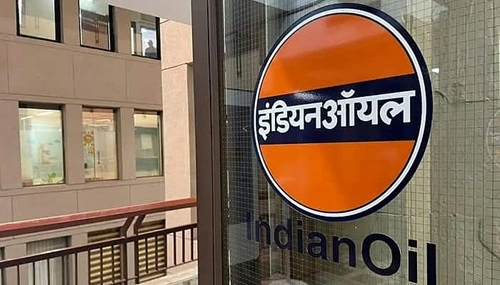Indian Oil Corporation (IOC), India’s leading refiner, is navigating a complex financial landscape as of 2025. In the quarter ending December 31, 2024, the company reported a consolidated net profit of ₹2,115 crore, a significant decline from ₹9,029.56 crore in the same period the previous year. This downturn is attributed to lower refining margins and increased expenses.
Strategically, IOC is investing ₹610 billion in a naphtha cracker project in Paradip, Odisha, to enhance its petrochemical capacity.
The company is also expanding its Panipat, Gujarat, and Barauni refineries, with completion expected by December 2025.
In terms of energy sourcing, IOC is purchasing Russian crude oil that is not associated with sanctioned entities. The company anticipates a 6-7% growth in gasoline demand and a 4% increase in diesel demand for the fiscal year 2026. Despite these growth projections, petrochemical margins are expected to remain weak in 2025 due to oversupply in the market.
These initiatives align with IOC’s goal to become a $1 trillion company by 2047, balancing traditional refining with clean energy ventures. Let’s dwell into the SWOT Analysis of Indian Oil Corporation.
Strengths
- Market Leadership: IOCL maintains a dominant position in India’s oil and gas industry, with a substantial market share in refining and marketing of petroleum products. The company operates an extensive network of over 50,000 consumer touchpoints, including more than 29,000 fuel stations, ensuring widespread accessibility across the nation.
- Integrated Operations: The corporation’s operations encompass the entire hydrocarbon value chain, including refining, pipeline transportation, and marketing of petroleum products, as well as exploration and production of crude oil and natural gas. This integration enhances operational efficiency and cost-effectiveness.
- Financial Resilience: Despite facing challenges in the global oil market, IOCL has demonstrated financial resilience. In the fiscal year 2023-24, the company reported a revenue from operations of ₹4,11,138 crores for the period April – September 2024.

Weaknesses
- Profit Margin Volatility: IOCL’s profitability is susceptible to fluctuations in global crude oil prices and refining margins. In the second quarter of 2024, the company experienced a nearly 99% drop in net profit, amounting to ₹1.8 billion, primarily due to reduced marketing margins and a decline in gross refining margins from $13.12 per barrel to $4.08 per barrel.
- Regulatory Constraints: As a state-owned enterprise, IOCL operates under significant government regulation, which can impact pricing strategies and operational flexibility, especially in response to market dynamics.
- Environmental Concerns: The company’s operations contribute to environmental pollution, and increasing global emphasis on sustainability poses challenges for IOCL to align with stricter environmental standards and reduce its carbon footprint.
Opportunities
- Diversification into Renewable Energy: The global shift towards sustainable energy sources presents IOCL with opportunities to invest in renewable energy projects, such as solar and wind power, aligning with environmental goals and reducing dependence on fossil fuels.
- Expansion of Natural Gas Portfolio: With the Indian government’s focus on increasing the share of natural gas in the energy mix, IOCL can expand its natural gas infrastructure and offerings, tapping into a growing market segment.
- Technological Advancements: Adopting advanced technologies in refining processes and digital transformation initiatives can enhance operational efficiency, reduce costs, and improve customer engagement.
Threats
- Intensifying Competition: The entry of private players and international oil companies into the Indian market increases competition, potentially impacting IOCL’s market share and profitability.
- Global Oil Market Volatility: Fluctuations in global crude oil prices and geopolitical tensions can adversely affect supply chains and profit margins, posing financial risks to IOCL.
- Regulatory and Policy Changes: Evolving government policies, including subsidy reforms and environmental regulations, can influence IOCL’s operations and financial performance, requiring adaptability to new compliance standards.
Conclusion
As of 2025, Indian Oil Corporation Limited stands as a cornerstone of India’s energy infrastructure, leveraging its extensive network and integrated operations. To sustain and enhance its market position, IOCL must address internal challenges such as profit margin volatility and environmental concerns. By capitalizing on opportunities in renewable energy and natural gas expansion, and by embracing technological advancements, IOCL can navigate the evolving energy landscape. Proactively mitigating external threats through strategic planning and operational agility will be crucial for IOCL’s continued success in the coming years.
Anantha Nageswaran is the chief editor and writer at TheBusinessBlaze.com. He specialises in business, finance, insurance, loan investment topics. With a strong background in business-finance and a passion for demystifying complex concepts, Anantha brings a unique perspective to his writing.


